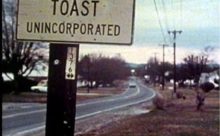Peter Seeger and the making of Homemade American Music
I first met Pete when I was 4 years old. That was in 1948 when my parents took me to a political rally and concert in Los Angeles for the Progressive Party presidential candidate Henry Wallace. Touring with actor, singer and political activist Paul Robeson, the lanky Yankee folksinger Pete Seeger got everyone in the audience singing songs of love, work, struggle and liberation; nobody could get people singing like Pete. Afterwards my parents took me backstage to meet both these men who were to become my childhood heroes.
More than anyone else, Pete Seeger opened the door to a whole world of folk music for urban Americans growing up in the 1950’s. An outspoken advocate for social equality and justice, Pete was among many performers who were blacklisted as Communist sympathizers and were not allowed to appear in movies, on television, theaters or large concert halls. So Pete started singing for smaller groups and in summer camps. As a teen-ager in the late 50's at a summer music camp in the Southern California mountains, I took singing and guitar lessons with him. I remember that one day Pete stepped on a nail and that my father, a doctor, pulled that nail out of Pete's foot, after which Pete stayed for dinner and sang and played some tunes with our family all evening. Although he was an excellent banjo player and trained musician, Pete was not at all interested in being a virtuoso; he just loved to sing and share good songs.
Years later, Carrie, my filmmaking and life partner, and I wanted to make a film about traditional music in America and phoned Pete to ask him if he would be in it. He thought a while and finally said that he had been in enough films, and then suggested that we talk to his half-brother Mike Seeger.
Backstage at Carnegie Hall during the filming of Homemade American Music in 1978, Pete enthusiastically suggested that we project our films on the outsides of buildings in Manhattan so that everybody could see them. He was a visionary and his optimism was infectious, as was his undying belief in social change.
The next time I saw Pete was in 2009 in Bethesda, Maryland at the memorial for Mike who had died that summer just after we finished filming Banjo Tales. Pete, Dom Flemons of the Carolina Chocolate Drops and I had a long breakfast chat together during which Pete frequently talked about songs he loved, not hesitating to sing all the verses. At one point I told him what an inspiration he was to me, to my whole generation and to our children, not just musically but also for the courage and integrity with which he faced the House Un-American Activities Committee investigators in the 50’s. He smiled graciously and began humming a tune. “Have you heard this one?” he asked.
A couple of years later, Carrie and I were shopping at our local farmer’s market in San Francisco when in the distance we saw a tall, rosy-cheeked, older man striding through the crowd, munching on an apple. There was Pete, 92 years old, who had come to town once more to sing the songs he loved and to get everyone to sing along with him.
Yasha Aginsky’s (yashaaginsky.com) music documentaries includeHomemade American Music with Mike Seeger and Alice Gerrard; Always Been a Rambler with the New Lost City Ramblers, and Banjo Tales with Mike Seeger, as well as Les Blues de Balfa, Cajun Visits; Shoutin’ the Blues, Sonny Terry and, in France , Bratsch at Work, and Nane Tsora.
